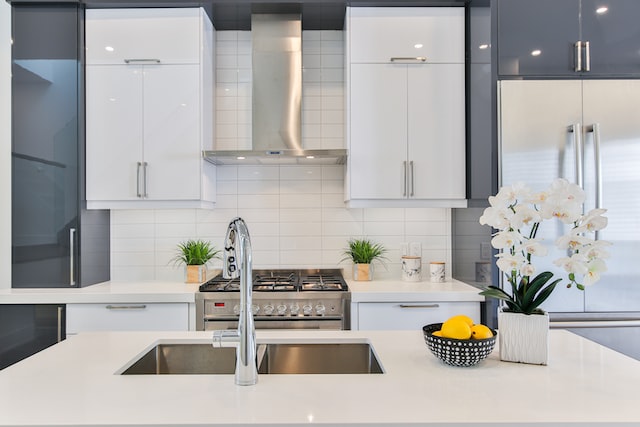If you’ve noticed that the water pressure in your kitchen sink is low, it’s time to take action. Fortunately, there are various methods available which can increase your water pressure quickly and easily.
1. The Aerator
An aerator is a screen at the end of your faucet that traps solid bits that have entered through the water line. Over time, this may become clogged with hard water minerals which cause your kitchen faucet to run less smoothly.
One of the best ways to increase your kitchen faucet’s water pressure is by cleaning out its aerator. To do this, take out the aerator and scrub it gently with a soft brush or toothbrush. Alternatively, soak it in vinegar solution overnight for thorough debris elimination.
2. Replace Your Faucet Cartridge
If both the aerator and cartridge have low water pressure, it could be time for replacement. A cartridge is a small disc that sits deeper in the faucet than its counterpart and has a hole through which water passes.
When a cartridge becomes clogged with debris, hard water, or sediment, low pressure can affect all faucets in your home. Fortunately, this is an easy fix that you can do yourself.

3. The Size of the Pipe Leading to Your Faucet
Your pipes may be too large for your faucet, reducing water flow through it and decreasing kitchen water pressure. To correct this, cut away a section of old pipe closest to the faucet and replace it with a round, small-diameter pipe matching your faucet model number.
4. Checking the Water Supply Line Under Your Sink
If your water pressure in your entire home has been decreased, it could be an indication of a problem with the water supply line under your sink. To check this line, turn off all water under the sink and place a bucket over it to catch any liquid that may seep out when the valve is opened.
5. The Pressure Regulator
In some homes, you have a pressure regulator that regulates the water pressure entering your house. This is usually a bell-shaped plastic unit with an adjustable screw you can turn counterclockwise to decrease pressure or clockwise to increase it.

6. The Shut Off Valve
Your shut off valve is a device that enables you to turn off the water at your kitchen sink. Unfortunately, this valve can become an issue with low water pressure if someone accidentally turns it off or partially opens it during repairs and routine upkeep.
7. Cleaning the Aerator
Most kitchen faucets are relatively straightforward to clean, so you don’t need professional assistance. All you’ll need are channel lock pliers and thick tape or a towel to protect the faucet finish from scratches. Once unscrewed, inspect for debris or sediment in the mesh of the aerator.

